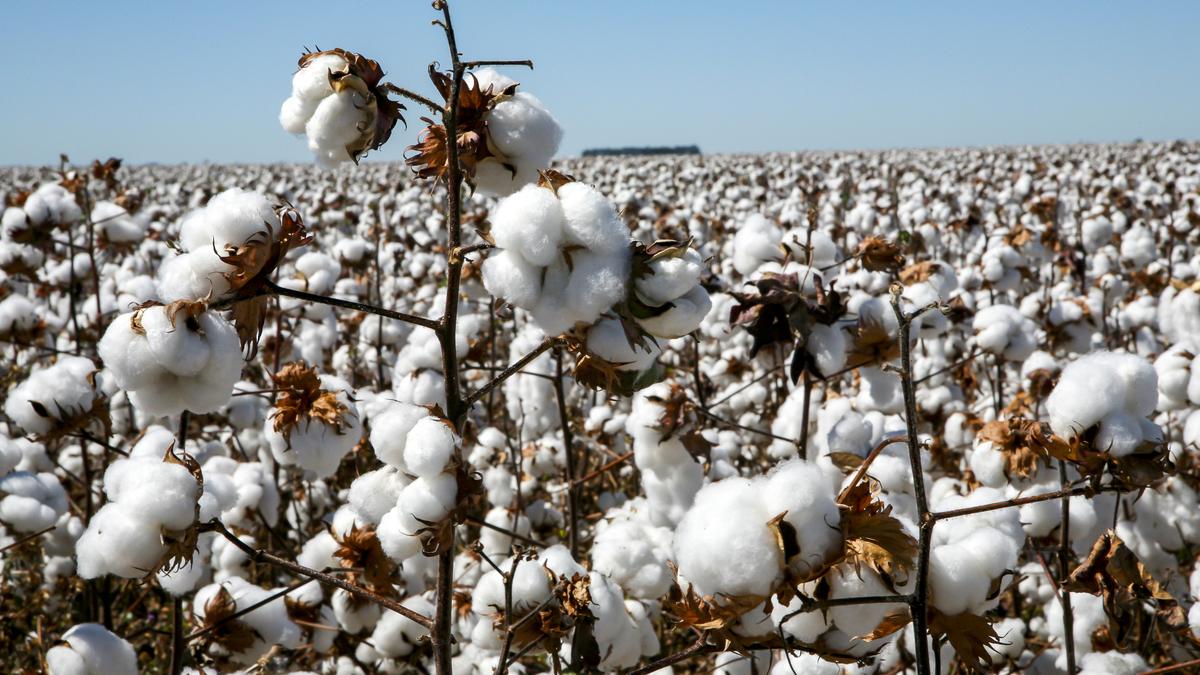The Indian government’s removal of the 11% import duty on cotton has drawn protests from farmer unions. The textile industry, however, has welcomed the move, as it faces the burden of punitive 50% tariffs imposed by the Trump administration. The textile sector, being one of the biggest employers, is witnessing retrenchment of women garment workers as global apparel brands shift the burden of higher tariffs onto supply chains in the Global South. Aside from geopolitics, the issue must be understood in the context of structural changes in India’s cotton trade and the blind spots in cotton research and development. It also highlights the need to revitalise farm-to-firm linkages in the domestic supply chain.
Trends in Indian cotton trade
India’s rise as a global cotton player is linked to production changes, especially after 2004-05.
Post-independence, India emphasised raising cotton output, having lost major producing regions during Partition. The Intensive Cotton Production Programme initiated this growth, followed by the introduction of hybrid varieties in the 1970s. The Technology Mission on Cotton (1999-2000 to 2013-14) gave a strong boost to productivity and quality. Bt cotton or Bollgard II variety received approval in 2002 for western and southern zones and in 2006 for the north.
Traditionally, India exported Bengal desi and short-staple cotton. Exports of medium and long-staple varieties later grew modestly. After 2004-05, exports surged exponentially. Until then, demand came mainly from Indian mills, but since then, international demand has driven additional growth of exports and expansion of market. Additionally, increase in domestic supply reduced the textile industry’s import dependency and boosted local ginning. For instance, in Gujarat’s Saurashtra, many groundnut-oil mills converted to cotton ginning and cotton-seed oil production. Strong farm-to-firm linkages in India’s cotton supply chain took shape after 2004-05s.
Issue of price parity
Despite previous progress, raw cotton imports are rising. In 2024-25, imports touched 5,25,158 tonnes — a 77% jump from the previous year, even with the import duty in place. The main reason is declining price parity: domestic cotton is costlier, while global prices are falling.
The Indian cotton supply chain begins with farmers and extends through ginners, spinners, textile mills, and the garment industry, eventually linking to major multinational brands. Over time, this chain has become increasingly integrated with global markets, making it vulnerable to international price fluctuations. Domestic spot market prices are influenced by global commodity indices and cotton-seed rates, with the Minimum Support Price (MSP) serving as a benchmark. As parity declines, ginning mills and brokers seek to acquire cotton at lower prices from farmers.
The Cotton Corporation of India (CCI) procures only when market prices fall below MSP, and its procurement signals inefficiencies in supply-demand balance. By June 2025, CCI had procured 34% of the production, among the highest in seven years.
Click to subscribe to our Data newsletter
High domestic costs are linked to falling production, declining acreage, stagnating productivity, and a weak cotton-to-lint ratio. Cultivation costs have also risen. Provisional estimates for 2024-25 show an 8.7% decline in cotton acreage, with north Indian farmers shifting to paddy and Gujarat farmers to soyabean and groundnut. In terms of productivity, Indian cotton took big leaps in the per hectare lint output ratio, especially in the post 2004-05 period. Average lint yield rose from 207 kg/hectare (1997-2002) to 481 kg/hectare (2012-17). The current yield of 437 kg/hectare, although above pre-2000 levels, lags considerably behind the world average of 833 kg/hectare, Brazil’s 1,903, and China’s 2,257.
Bt hybrids now cover over 95% of cotton acreage. Initially meant to tackle the persistent pink bollworm attacks and reduce insecticide use, the technology is over two decades old — a long time for any crop-technology to become more susceptible to pest-resistance. Bt hybrids soon spread to drylands, leading to loss of potency and other episodes of ineffectiveness and crop failures.
Research and investment
Globally, innovation and technology adoption has advanced further: major cotton exporters Brazil and Australia have adopted Bollgard-III, while China, the largest cotton producer, is using CRISPR-based gene editing. Indian debates have rightfully focused on corporate control of Bt technology; however, contemporary cotton production has fallen behind. In the present moment, advanced seed technology with adaptability to diverse agro-climatic conditions, higher lint output, and sustainable resource management require a targeted public-research response.
India’s R&D spending is among the lowest in the developing world.
Correcting falling price parity does not mean retreating to a time of weak domestic and international demand of Indian cotton. Instead, India must envision a future where public investments in cotton strengthen farm-to-firm linkages by focusing on both quantity and quality.
The writer teaches at School of Economics and Public Policy, RV University, Bangalore
Source: Indiastat, the Cotton Association of India’s annual “Cotton Balancesheet” and the Cotton Corporation of India
Also read:Agricultural protectionism pushes up India’s import tariff: Data
Published – September 23, 2025 08:00 am IST
